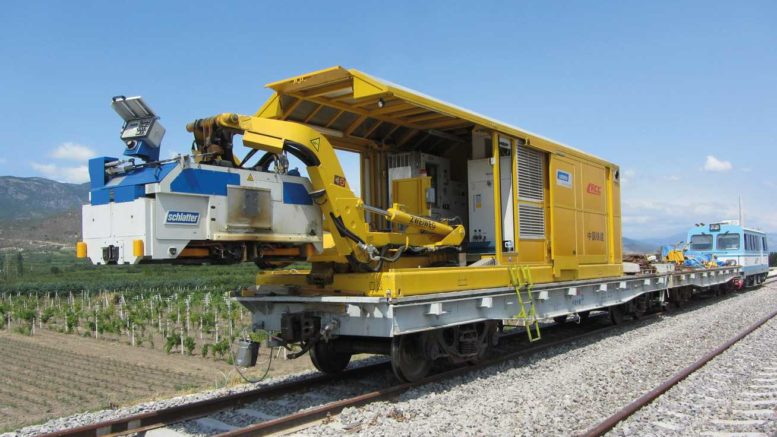Welding is a process which helps in joining the materials, mostly metals by utilising high temperature to melt the metal parts together and joining them.
Welding of railways it is a difficult task, as they have unusual profile and broad cross section and content of carbon is very high. The various methods of welding which are used in joining of rails are gas pressure welding, flash welding, enclosed arc welding and almino-thermic welding. From all of these, flash welding has the maximum efficiency.
Flash Weldingrefers to the electrically resistive welding process which is used for connecting the elements, where from the parts, energy transfer is provided basically through the resistance heat. The parts are placed end-to-end throughout the complete joint area.
In flash welding of rails, the electric energy is provided among the end faces of rails which are to be connected, free rail is passed over it and flash and arc are created through resistive heating and the heat which is created by the connection of the rail ends. This process is reiterated a several times till the melt layer is created on the whole joint surface. This method is proved to be the most trustworthy method having least error rate. This welding of railway tracks is done with the help of road-rail vehicles. The road-rail vehicles are the vehicles which can work on both road and as well as on rail tracks. These vehicles are fitted with the normal rubber tyres and with additional flanged steel wheels for running on railway tracks. The steel wheels can be raised and lowered according to the requirement.
In the initial step of flash welding, the rail is heated up to the melting temperature. The base and foot of the rail cools down first. And due to greatest proportion of material being in the head of the rail, it take a large amount of time to cool down. Naturally, depression gets created on the area where welding is conducted and to rectify this, an upward inclination of two rail ends is conducted, to reach to the perfect position.
Various types of Flash Welding Railway machines used are as follows:
- Stationary Welding System: This system is utilised in huge welding plants to connect the long and short rails.
- Stationary Flash Welding Machine: They provide high quality welding and are employed to weld the any length between short rails toup to 550m length of long rails and even more longer.
- Mobile Flash Welding system: It assists in producing the track sections directly in-track. For fast railway lines, perfect alignment is required which can be achieved through AMS60 welding machine. For heavy rail profiles AMS100 welding machines is used, which have massive welding force as compared to AMS60.
- Container based Rail Welding System: These are adequate where a number of railway lines are to be arranged and many number of welding have to be done.
- Truck Based Rail Welding System: These are automotive and are flexible, as they can be easily shifted from one worksite to the other.
Flash Welding is very powerful and provides great assistance in Railways.

Be the first to comment on "Flash Welding: Improving Railways"